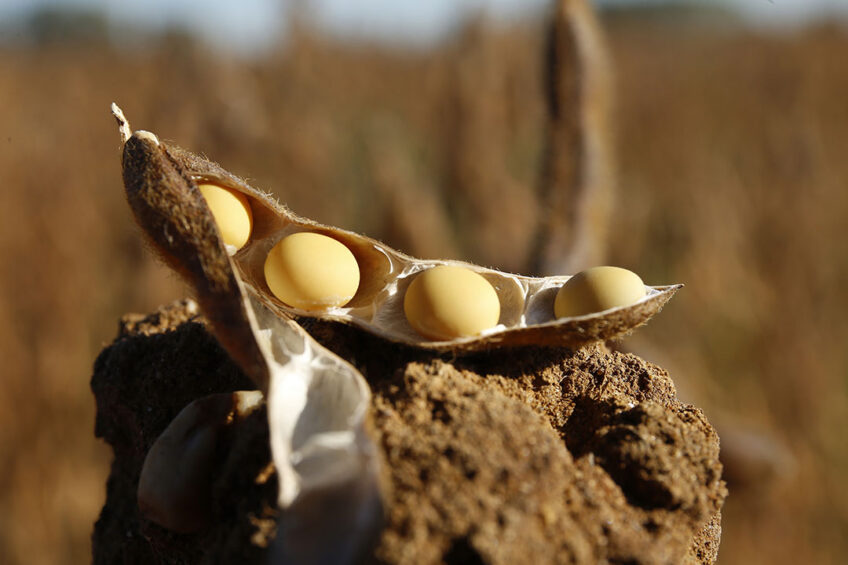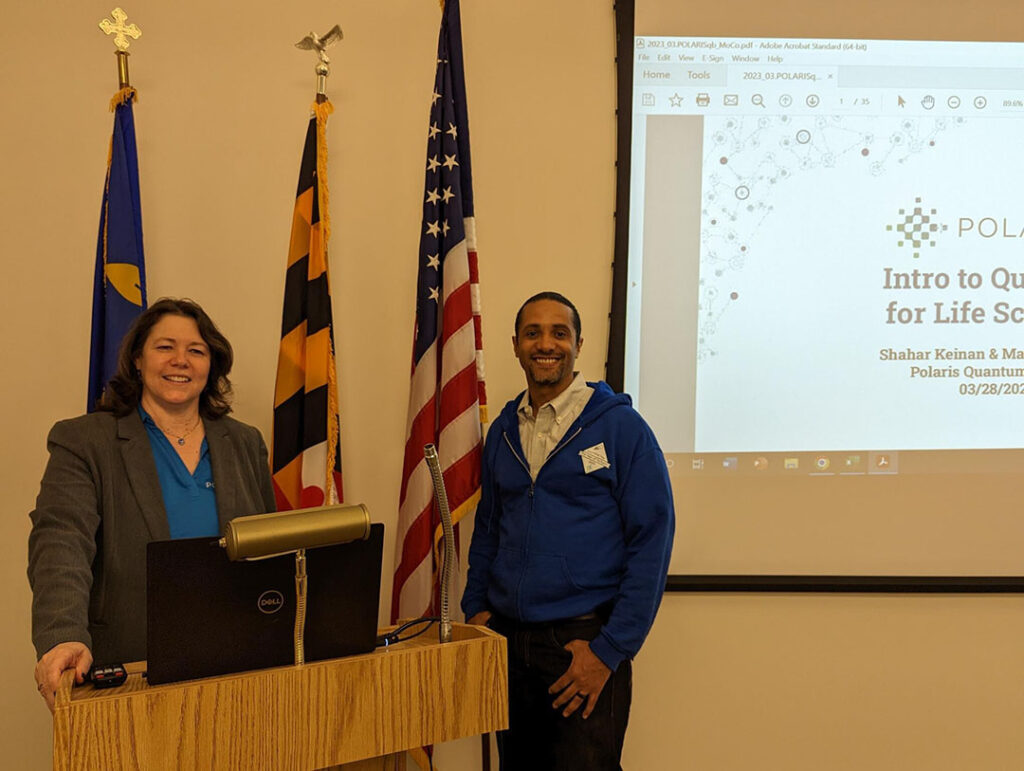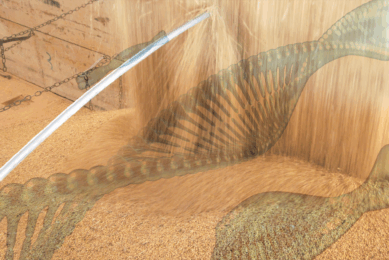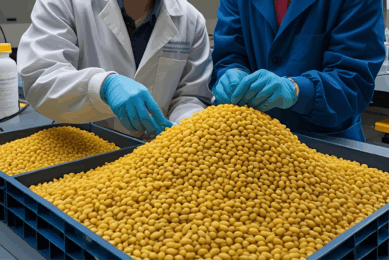Inactivation of soybean trypsin inhibitors: A game-changer in development

A more-effective and economical way to inactivate trypsin inhibitors in soybean meal is something of a holy grail in the feed industry. The team at POLARISqb is making swift progress with an entirely new approach.

The company POLARISqb (short for Polaris Quantum Biotech), based in North Carolina US uses quantum computing power and large molecular libraries to build an inactivation peptide.
The company’s work on a feed additive that inactivates trypsin inhibitors is being supported in part by funding received through the company winning a Soy Innovation Challenge prize for 2022, announced this spring. It’s an annual competition held by 2 organisations in the US, the United Soybean Board and The Yield Lab Institute, that recognises the innovative work of start-ups and established companies alike.
“This is our first feed additive project, and we are very excited about the results so far,” explains Dr Shahar Keinan, POLARISqb CEO & co-founder. Since the company started about 3 years ago, it has already achieved amazing success with pharmaceuticals, completing 15 projects in relationships with other companies.
Of the feed additive, Keinan adds, “we only started working on this in the spring, when we submitted the Challenge award, and we have the 2 preliminary designs ready for testing.”
What are trypsin inhibitors?
To quickly review the topic, soybean meal inhibitors are a serious concern as they resist natural and exogenous proteases and prevent full digestion of soybean protein. They are a production and sustainability barrier in that if they were not present, more meat weight gain in the case of fish, broiler chickens and aquaculture species (or improved egg or milk production in the case of laying hens and dairy cattle/goats/buffalo/sheep) would result from providing the same amount of feed. Also, less nitrogen would be excreted into the environment in the form of protein in the feed that is not fully digested.
Soybeans contain both the Kunitz and Bowman-Birk trypsin inhibitors (these 2 groups mainly differ in their molecular weight class). As researchers in Canada and India confirm in a recent paper in the journal Food Production, Processing and Nutrition, neither of these inhibitors is readily inactivated by heat treatment of feed due to the presence of molecular structures called disulfide bridges.
As a team of researchers explain in the Journal of Food Science, other methods to inactivate soybean trypsin inhibitors (besides heat treatment) include ultrafiltration, extrusion, ultrasound, radiation, soaking, chemical processes, high hydrostatic pressure and instant controlled pressure drop.
Discovering new drugs is like unearthing gold nuggets. They could be anywhere, depending on a number of factors, and the challenge is to find the right ones to address a specific target.
How the technology works
Whether ‘designing’ a peptide drug, feed additive or other type of biochemical, the POLARISqb process is the same. Using its quantum computing power and artificial intelligence (AI) algorithms, the team first identifies and maps the area in the protein that they are targeting and then translates that into a mathematical construct.
The algorithm then takes that blueprint and does an optimised search of large molecular libraries, supported by quantum computing power that’s able to process up to 10 30 (a one followed by 30 zeros, also called one nonillion) combinations of amino acids and other organic chemical pieces, that, when assembled, will produce the desired molecular structure.
However, the quantum computer also takes other aspects into consideration. “The combination must be able to be synthesised fairly easily and economically, with the amino acids able to connect to each other and with other pieces to build the peptide,” Keinan explains. “It’s the strength of quantum computing to be able to rapidly look at different construction pathways and find the ones that will work best.”
Large analysis
The more molecules included in the starting library of molecule candidates, the better the chance that the desired combination will be found.
The POLARISqb team explains that the number of molecules (or chemicals) with low molecular weight (amino acids etc.) is very large – about 10 65.
“This space includes every molecule that has ever been ever synthesised, or will be synthesised in the future, including all current and future molecular drugs,” the team notes. “Discovering new drugs is like unearthing gold nuggets. They could be anywhere, depending on a number of factors, and the challenge is to find the right ones to address a specific target. Using quantum computing means we can look at increasingly larger libraries as well as build bespoke libraries for each target protein profile.”
Quantum computing offers the possibility of accelerating the discovery timelines of drugs and feed additives … opening doors that may lead to new treatments, cures, much more sustainable livestock farming and much more.
POLARISqb’s Principal Software Engineer Maurice Benson further explains that the quantum computers he and his team use are called annealers. These solve only one set of problems. There are also quantum gate computers, which solve multiple tasks but these aren’t yet ready for production. The annealer that POLARISqb uses is located on a server in Canada. Currently, the system has been able to handle a library of 10 30 molecules.
But in the past, due to limited computing power, researchers were able to look at only small libraries, making the process of finding preclinical candidates slower and more expensive. “Quantum computing offers the possibility of accelerating the discovery timelines of drugs and feed additives etc. by several orders of magnitude,” Benson says, “opening doors that may lead to new treatments, cures, much more sustainable livestock farming and much more.”
After the quantum computing is finished and they have the design of the peptide, scientists send an instruction manual for producing the finished peptide to a chosen firm that specialises in peptide synthesis. These companies use robotic systems to build peptides by adding amino acids and other organic molecule pieces in the correct order.
Feed additive
As already mentioned, in the case of POLARISqb’s feed additive creation, they have already found 2 potential peptide structures that will bind to Kuntz trypsin inhibitor in soybeans. They are now looking for partners that are interested in working and testing these 2 preliminary designs.
“The work ahead will determine if either of these designs are suitable for feed additive product manufacturing, for example if they are heat-tolerant and will stay in a stable form until fed to livestock animals,” says Keinan. “The winner must also be able to be produced at a feasible cost.”
Contact for publication records: Dr Shahar Keinan CEO & co-founder Polaris Quantum Biotech (919)-357-5319; skeinan@polarisqb.com











